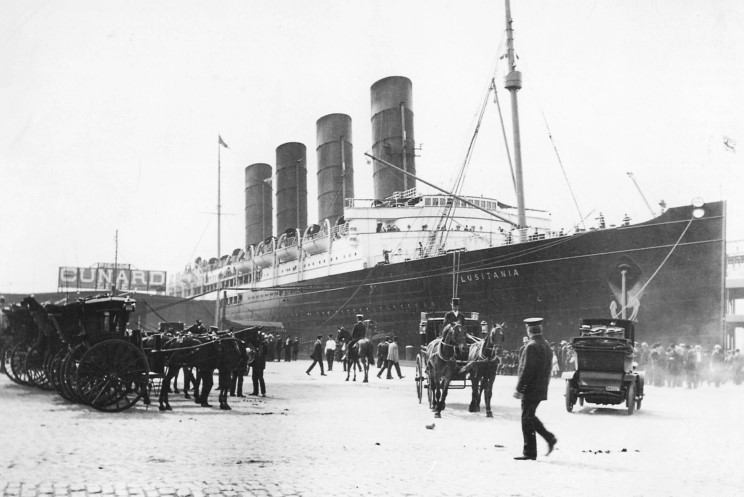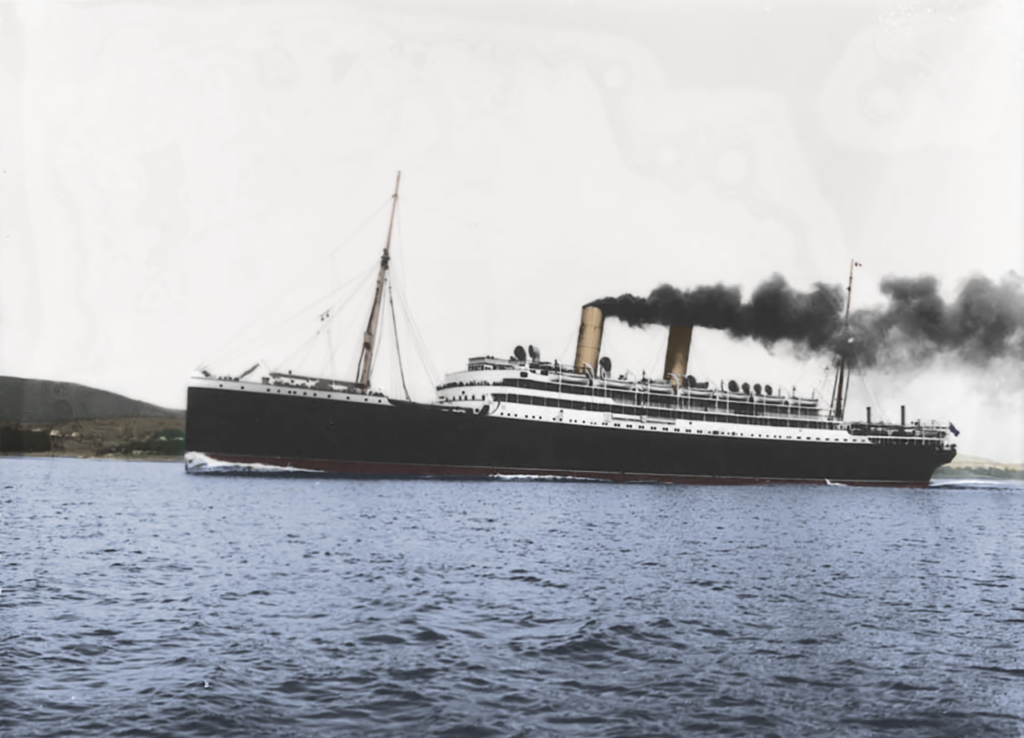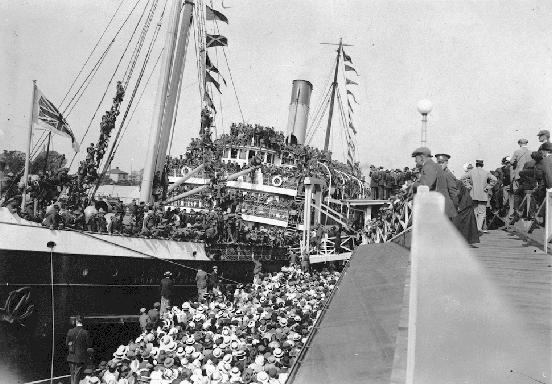Maritime disasters have plagued humanity for centuries. There have been countless lives lost at sea due to various causes such as storms, collisions, and human error.

These disasters have left a lasting impact on the world and serve as a reminder of the dangers of seafaring.
Here, we will look at ten of the worst maritime disasters in history. Not just in terms of the number of lives lost but also the circumstances.
MV Dona Paz – Philippines, 1987
The most horrific maritime disaster in history occurred in the Philippines on December 20, 1987. The MV Dona Paz collided with an oil tanker, the MT Vector.
The passenger ferry was carrying an estimated 4,386 people, but only 24 survived the collision and subsequent fire.
The exact number of casualties is unclear, but estimates range from 4,341 to 4,386. This makes it the deadliest maritime disaster in history.
RMS Titanic – North Atlantic, 1912
One of the most famous maritime disasters in history is the sinking of the RMS Titanic on April 15, 1912. It claimed the lives of 1,514 passengers and crew members.
The luxury liner struck an iceberg and sank in just two hours and forty minutes.
This lead to significant changes in safety regulations and ship design. Although not the largest maritime disaster, it’s certainly among the most researched.
MV Wilhelm Gustloff – Baltic Sea, 1945
The sinking of the MV Wilhelm Gustloff on January 30, 1945, is one of the deadliest maritime disasters in history.
The ship was a German passenger liner that had been requisitioned by the Kriegsmarine (the German Navy).
It was being used to transport German civilians and refugees from East Prussia to safety in the West.
The Wilhelm Gustloff was designed to carry 1,900 passengers and crew. On this voyage though it was carrying an estimated 10,582 people, including 5,000 children.
The ship had limited lifeboats and was not equipped to handle such a large number of passengers.
The journey was already perilous, with freezing temperatures, ice floes, and the risk of attack from Soviet submarines.
 The modern looking Wilhelm Gustloff in1940. Five years later she would be sunk.
The modern looking Wilhelm Gustloff in1940. Five years later she would be sunk.
At around 9 pm on January 30, the Wilhelm Gustloff was hit by three torpedoes fired by the Soviet submarine S-13.
The torpedoes hit the ship’s port side, causing significant damage and quickly causing the ship to list heavily to one side.
The ship’s captain ordered an immediate evacuation. The limited number of lifeboats however, meant that many passengers were left stranded on the sinking ship.
The situation on board quickly became chaotic, with passengers jumping into the freezing water and struggling to stay afloat.
The ship sank within an hour of being hit, and many passengers were trapped below deck and drowned.
The freezing temperatures of the Baltic Sea made survival almost impossible. Rescue efforts were severely hampered by these adverse weather conditions.
Estimates of the number of casualties vary widely. It is believed that around 9,400 people lost their lives in the disaster, including 5,000 children.
SS Kiangya – China, 1948
The SS Kiangya was a Chinese passenger steamship that sank on December 4, 1948, after hitting a mine in the Huangpu River.
The ship was carrying an estimated 2,750 passengers and crew members, with only around 700 surviving the disaster.
The exact number of casualties is unclear, but estimates range from 2,750 to 3,920.
RMS Lusitania – North Atlantic, 1915
 The Lusitania in New York on her maiden voyage in 1907.
The Lusitania in New York on her maiden voyage in 1907.
The sinking of the RMS Lusitania on May 7, 1915, remains one of the most significant maritime disasters in history.
The British passenger liner was torpedoed by a German U-boat, causing it to sink in just 18 minutes. This resulted in the deaths of 1,198 passengers and crew members.
The sinking of the ship is also famous due to fact that it dragged the US into WW1.
MV Doña Marilyn – Philippines, 1988
The sinking of the MV Doña Marilyn on October 24, 1988, was one of the deadliest maritime disasters in the Philippines.
The ship was a passenger ferry operated by the Sulpicio Lines.
It was traveling from Manila to Tacloban City when it encountered rough weather caused by Typhoon Unsang.
The MV Doña Marilyn was carrying an estimated 511 passengers and crew, including many women and children.
The ship was not equipped with enough lifeboats or life jackets for all the passengers so many were left to fend for themselves when the ship started to sink.
 Parts of the MV Doña Marilyn have started to be salvaged. Some say this is insensitive.
Parts of the MV Doña Marilyn have started to be salvaged. Some say this is insensitive.
The ship encountered strong winds and rough seas, which caused it to capsize and sink in the Tablas Strait, between the islands of Tablas and Sibuyan.
Rescue efforts were hampered by the bad weather, and many passengers were left stranded in the water for hours before help arrived.
Only 122 people were rescued, while an estimated 389 people lost their lives in the disaster.
The exact number of casualties is unknown, as many passengers were not listed on the ship’s manifest.
Most of the victims were women and children who were trapped below deck when the ship sank.
SS Eastland – Chicago, 1915
The SS Eastland was a passenger steamship, While docked in the Chicago River on July 24, 1915, it rolled over onto its side, trapping many of its passengers below deck. The disaster claimed the lives of 844 people, mostly women and children.
RMS Empress of Ireland – St. Lawrence River, 1914
The RMS Empress of Ireland was a British ocean liner that operated between Liverpool and Quebec in the early 20th century.
On May 29, 1914, the ship was en route from Quebec to Liverpool when it collided with the Norwegian coal ship SS Storstad. Consequently, the Empress of Ireland sunk within 14 minutes.
 The Canadian ocean liner RMS Empress of Ireland. She sank with great loss of life.
The Canadian ocean liner RMS Empress of Ireland. She sank with great loss of life.
The Empress of Ireland was carrying 1,477 passengers and crew, including many immigrants from Canada who were returning to Europe.
The collision occurred in dense fog and rough waters, making it difficult for the crew to respond quickly.
Despite efforts to launch lifeboats, many passengers were trapped below deck as the ship sank.
Out of the 1,477 people on board, only 465 survived the disaster, making it one of the deadliest peacetime maritime disasters in Canadian history.
Most of the casualties were from the third-class cabins. In contrast, most of the passengers from the first and second classes survived.
The sinking of the Empress of Ireland had a significant impact on the shipping industry and led to changes in maritime safety regulations.
The disaster highlighted the importance of proper navigation and the use of radio communication in foggy conditions.
It also led to the establishment of the International Ice Patrol to monitor iceberg activity in the North Atlantic.
The sinking of the Empress of Ireland is also significant for its impact on Canadian history.
The disaster occurred during a time of political and social upheaval in Canada, with tensions between French and English-speaking Canadians.
SS Princess Sophia – Alaska, 1918
 The SS Princess Sophia as a Great War troop ship in 1915. She was to be another maritime disaster in the making.
The SS Princess Sophia as a Great War troop ship in 1915. She was to be another maritime disaster in the making.
The SS Princess Sophia was another Canadian passenger liner that sank off the coast of Alaska on October 25, 1918, after hitting a reef.
The ship was carrying an estimated 353 passengers and crew members, with all of them losing their lives. It remains one of the worst maritime disasters in the history of Canada.
MV Joola – Senegal, 2002
The MV Joola was a Senegalese passenger ferry that sank on September 26, 2002, after being caught in a storm.
The ship was carrying an estimated 1,863 people, well over its capacity, and only 64 survived the disaster.
The exact number of casualties is unclear, but estimates range from 1,000 to 1,800.
These ten maritime disasters serve as a tragic reminder of the dangers of seafaring, and the need for strict safety regulations and precautions. Each disaster had a significant impact on the world.
They led to changes in the way ships are designed and operated, as well as increased focus on safety measures and emergency procedures.
The lessons learned from these tragedies continue to shape the way we approach maritime safety They ensure that future generations can travel and transport goods by sea with greater confidence and security.





